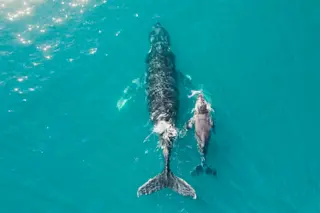On 7 August 1999, a lucky photographer snapped a female humpback whale frolicking off the east coast of Brazil. Two years later, on 21 September 2001, the same whale was caught on camera again, by a tourist on a whale-watching boat. But this time, she was a quarter of the world away, off the eastern coast of Madagascar. The two places where she was spotted are at least 9800 kilometres apart, making her voyage the longest of any mammal. The spots on her tail leave little room for doubt that both photographers had seen the same whale. These spots are unique to individuals in the same way that fingerprints identify individual humans. They form the basis of the Antarctic Humpback Whale Catalogue, an international collaboration between “scientists, naturalists and tourists” headed by Peter Stevick. Together, the members contribute photos of humpbacks around the world, in an effort to track the ...
Across an ocean, round a continent – the epic 10,000km voyage of a humpback whale
Discover the awe-inspiring humpback whale migration of a female breaching oceans, setting records with her incredible journey.
ByEd Yong
More on Discover
Stay Curious
SubscribeTo The Magazine
Save up to 40% off the cover price when you subscribe to Discover magazine.
Subscribe












